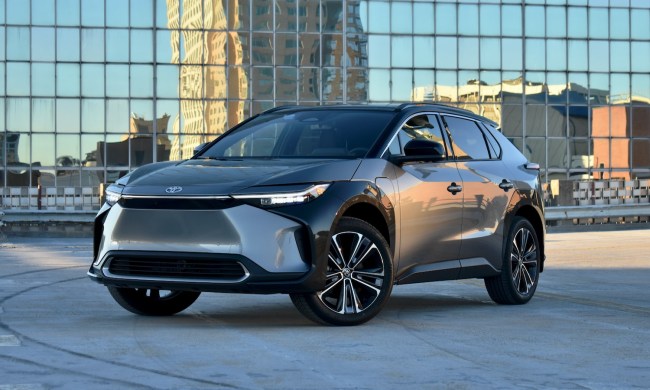Aston Martin is rolling out its second special edition model in nearly as many weeks, and it should leave drivers with lead feet clamoring. Whereas the Vanquish Centenary Edition emphasized style, the Rapide S emphasizes performance.
The biggest change is a new version of Aston’s AM11 5.9-liter V12. In the Rapide S, it produces 550 horsepower and 457 pound-feet of torque, giving it 80 more horses and 37 more pound-feet than a standard Rapide.
The new engine may seem like a more powerful version of the V12 Aston uses in its other cars, but its character has changed along with its output. The Rapide S has more low-end torque than its predecessor; twisting force peaks at 2,500 rpm. That should make the updated car more tractable. The new engine is also mounted 19 mm lower in the chassis, lowering the center of gravity.
Aston says the Rapide S will do 0 to 60 mph in 4.7 seconds, an improvement of 0.4 second over the non-S Rapide.
To improve handling, Aston modified the standard Rapide’s dynamic stability control, and gave the Rapide S an upgraded Adaptive Damping System with an added “Track” setting. This luxurious four-door might not be our first choice for a track day, but at least Aston is giving owners the option to let it all hang out.
To keep the driver in passengers in place while all that is going on, Aston kept the standard Rapide’s four bucket seats. For the Rapide S, they’re trimmed in Duotone red and black perforated leather for a sportier look, although they also look like they were taken out of a 2002 Nissan Sentra SE-R.
The rear buckets also fold flat at the touch of a button, making the Rapide S into a somewhat practical family vehicle. Other upgrades include a rear seat entertainment system and a backup camera.
The Rapide’s styling did not need improvement, but Aston made a few changes to highlight the Rapide S’ upgraded hardware. The new front fascia looks like either a masked Hannibal Lecter or the face of a Ford Focus Electric. There’s also a bigger trunk spoiler and a new set of wheels.
The Rapide S is also available with an optional Carbon Exterior Pack. Not surprisingly, it includes some extra carbon fiber, including: a front splitter, rear diffuser, mirror caps, and taillight centers.
Aston will start taking orders for the Rapide S in February and, while the company isn’t discussing the price, expect it to cost a little more than the “base” Rapide, which already costs more than $200,000. Upgrading doesn’t come cheap.


